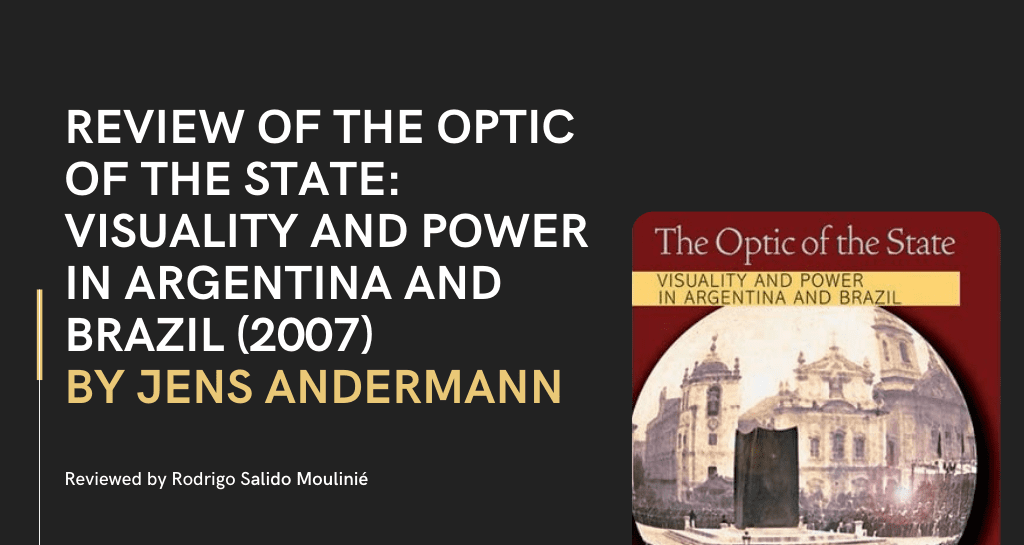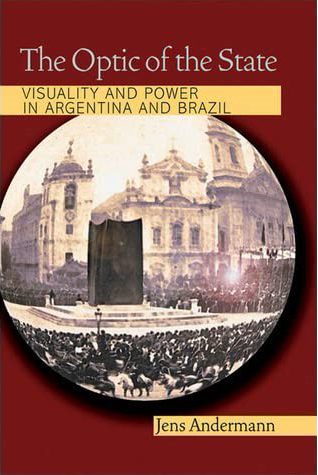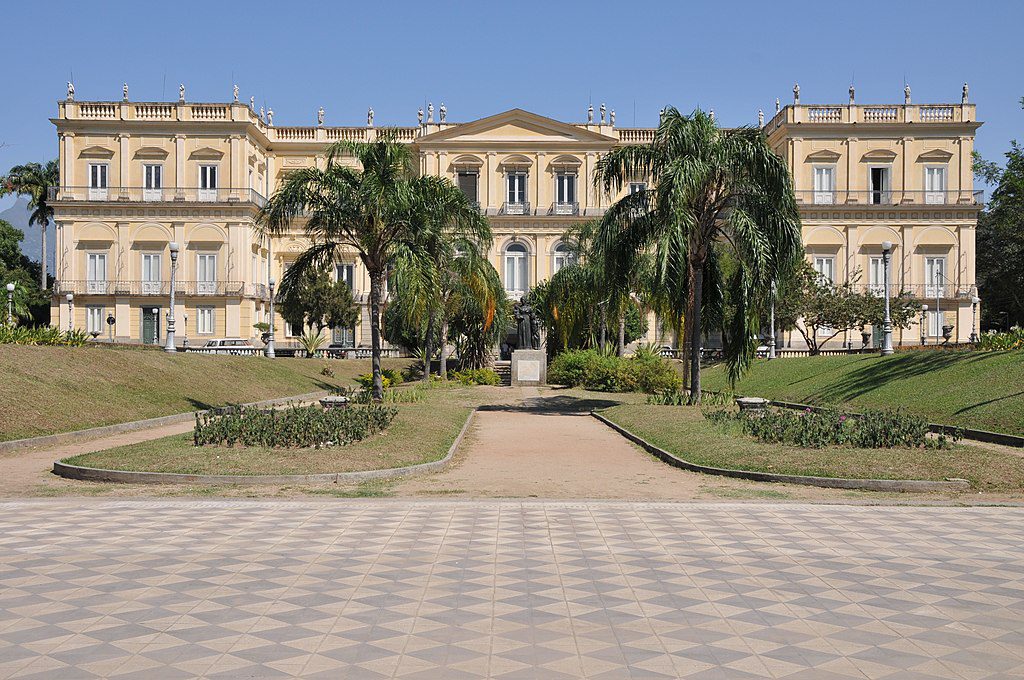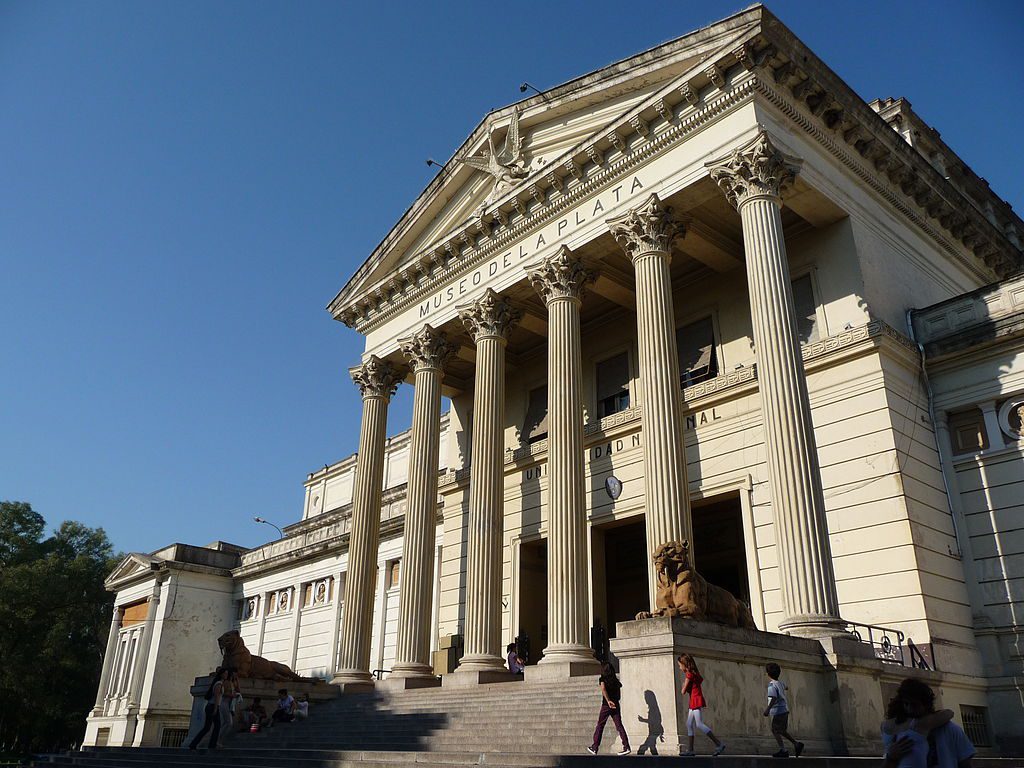
The Optic of the State explores a wide array of images, image-making processes, and display methods in nineteenth-century Argentina and Brazil. Jens Andermann argues that the ideas of the state as law in practice, or as a group that holds the monopoly of legitimate violence, are insufficient. The state also entails a visual form, a way of seeing, that is an optic. Maps, museums, and photographs lie at the core of the state’s power as a means of observation, ordering, and storage—not because of what they show, but in the ways of seeing they call for. The book unveils the politics of making and printing photographs, designing museum exhibitions, and marking up maps: images as objects, as performance, as history. It proposes that we should think of the state as the relation between spectators and images—a particular gaze.

Yet the meanings of images remain unstable, contested, and situated. An obvious display of power may actually become a sign of weakness. Maps and museums reveal the perils of state-building practices in nineteenth-century Latin America through failed policies, poorly reviewed museum exhibitions, or bureaucratic politics where they played a central role. The first part of the book deals with museums and their convoluted purposes. Whether as a space to show the appropriation of land and resources, as a storage point for the nation’s wealth, or as an educational device, the making of museums entailed reaching definitions of nationhood, people, and history. Anthropology, archeology, and paleontology took center stage in this process of delimiting the nature of these countries, who their inhabitants and their citizens were.

The disciplinary aims of collecting and exhibiting, however, often failed when confronted with the people and politics outside the walls of the museum. Andermann contrasts the efforts of Brazilian and Argentinian collectors and historians via an examination of the Museu Nacional in Rio de Janeiro and the Museo de la Plata in Buenos Aires. He shows that the experience of seeing the museum did not always produce its desired effects of monumentality, of naturalizing history, and legitimizing state violence. By putting nature, empire, and anthropology in the same narrative-visual space, museums made the contradictions and violence inherent to state-building visible.

Maps and photographs also deploy ways of seeing and of capturing landscapes, peoples, and histories. They build the optic of the state, yet they imply a distinct epistemological status: maps, landscape sketches, and photographs were so powerful and contested because of their apparent truth-value, their “immediate access to the real.” The same click of the camera or drawing a square on a map could produce and acquire space, claim legitimacy over dead bodies and othered selves, and create a discourse with aims of objectivity. Andermann offers a series of close readings of maps and photographs that show the fragility of their meanings and objectives at the frontiers of Brazil and Argentina: captions, narratives, and markings frequently tried to anchor what images said (or better: what they were meant to say). Through these views of the margins, the book effectively demonstrates how science, nature, and the politics of representation are inseparable with what the state is and how it operates.
The Optic of the State is a provocative, perhaps even uncomfortable book. The extensive research that supports its arguments makes a cogent case for thinking about the state as a visual form, along the lines of what Ashis Nandy, W. J. T. Mitchell, and Timothy Mitchell suggest: visualizing history, nature, and nationhood entails a politics, a way of seeing. Like any other book with a wide scope, the selection of materials seems capricious at times, yet this hardly diminishes Andermann’s argument. The state as a visual form exists, and it poses a set of methodological and theoretical challenges to the historian. The Optic of the State is a good place to start.
The views and opinions expressed in this article or video are those of the individual author(s) or presenter(s) and do not necessarily reflect the policy or views of the editors at Not Even Past, the UT Department of History, the University of Texas at Austin, or the UT System Board of Regents. Not Even Past is an online public history magazine rather than a peer-reviewed academic journal. While we make efforts to ensure that factual information in articles was obtained from reliable sources, Not Even Past is not responsible for any errors or omissions.



